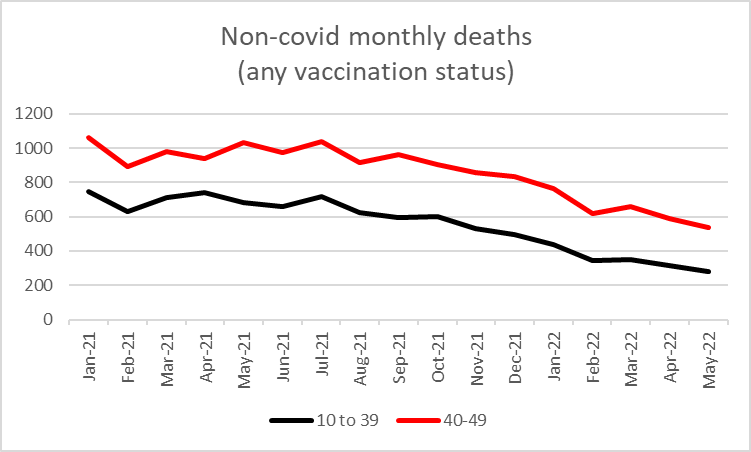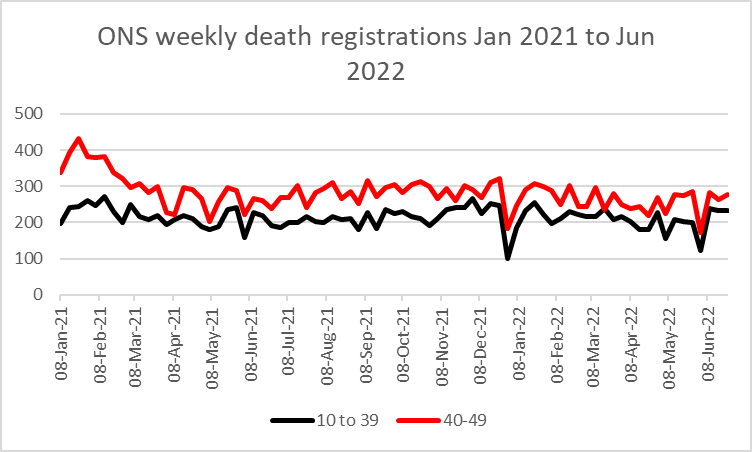
Latest ONS deaths by vaccination status
The ONS have released the latest update on their data for deaths by vaccination status. Superficially it appears to show residual protection against death in the vaccinated but only a little digging reveals that there is likely hidden information that could turn that observation on its head.
For every age group the proportion of non-covid deaths in the unvaccinated is similar to the proportion of the population that is unvaccinated. There are disproportionate numbers of covid deaths in the unvaccinated population as would be expected with vaccines that reduced death from covid.
However, there is a serious issue of attribution. Take the number of deaths in the under 50 year olds. Last May there were approximately 1,000 total deaths per month in 40-49 year olds and 700 in 10-39 year olds. However, in May 2022, the figures have plummeted to half previous levels for 40-49 year olds and a third for 10-39 year olds. Where have the deaths gone?

Could covid be responsible? Figure 2 depicts the same data for non-covid deaths only; the pattern is similar.

Could it be that deaths really have reduced? If we look at the whole population of England and Wales over the same period but for weekly death registrations, it is clear that deaths have not fallen in the later months.

The population that ONS claim their dataset includes has remained static over the last year.
There are really only two explanations left:
- Deaths by date of occurrence have genuinely fallen to historically record lows and the registration data is somehow being bulked out by deaths in Wales and the 20% of the English population not in the ONS sample or from a lag in processing
- The ONS have not included all the deaths they should have in their data
Any conclusions that might be drawn from this data must come with a huge serving of salt when the data is so clearly not reflective of the real world.

